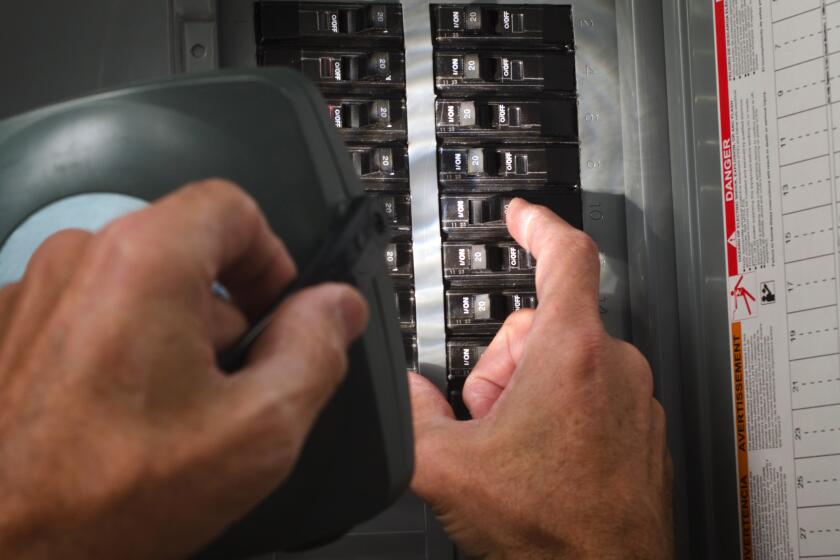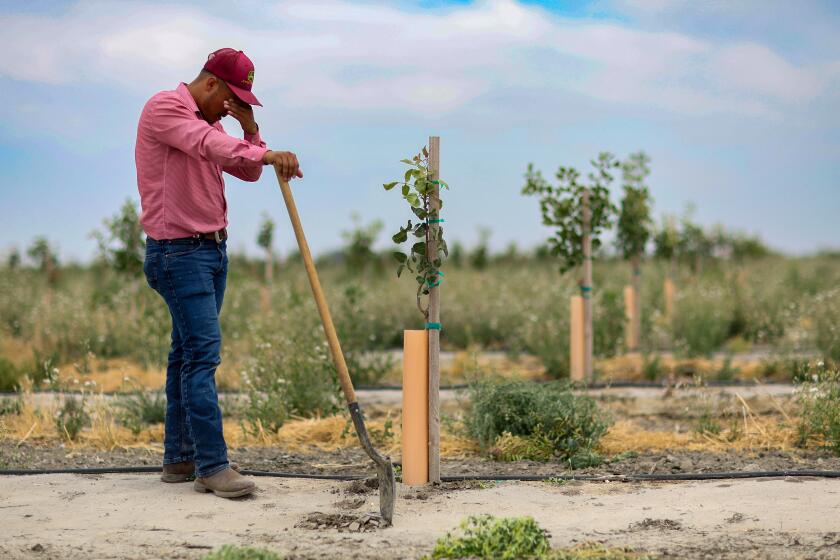Skies Still Cloudy for Long Beach Airport’s Future
Civic turbulence over the future of Long Beach Airport is nearly as old as its Art Deco terminal.
But unlike the airport wars of yore -- when a councilman sent an aide to videotape a residents’ no-growth meeting, and anti-growth activists reportedly ran background checks on the pro-growth camp -- this month’s public debate has been remarkably calm.
Even though the Long Beach City Council may take the significant step Tuesday of voting on whether to accept the environmental impact report on an airport upgrade, the tone of the debate has recently shifted from seething to civil.
That’s because, although opponents of expansion say they are vehemently against anything that would increase the number of daily flights out of Long Beach, many have said they support modest improvements to the aging landmark as long as their concerns about growth are fully addressed.
“We all want to get this modernized, an airport we’re proud of,” Long Beach resident and Chapman University law professor John Eastman said at Tuesday’s City Council meeting. “So modernize that thing, don’t supersize it. Let’s have an airport we can all live with.”
Only five years ago, the airport had just 15 commercial departures a day, with more planes filled with cargo than with people. But since JetBlue Airways made Long Beach its West Coast hub in August 2001, the company’s cheap fares and the ease for travelers of getting in and out of the airport quickly have vastly increased activity at the site.
There are now 41 daily commercial flights -- the maximum allowed under the city’s airport noise ordinance. The number of passengers using the airport has exploded, from half a million in 2001 to more than 3 million in 2005. Post-9/11 security demands have worsened peak period congestion and further increased traffic, as more travelers have chosen to use Long Beach to avoid long lines and delays at bigger airports.
All these pressures, and the urging of JetBlue Airways and other business leaders, prompted the city to seek an expansion of the terminal.
The report that the council will vote on next week details several possible proposals that would add space for passengers who now wait for flights in trailers, enclose security screening areas that are now under glorified patio covers and -- most controversially -- add varying amounts of plane and vehicle parking space.
The largest of the proposals -- judged the “environmentally superior alternative” by the report’s authors -- would nearly double the 58,230-square-foot facility to 102,850 square feet. The report also analyzes terminal sizes of 97,545 and 79,725 square feet.
At this week’s meeting, the City Council heard several hours of testimony, watched videos and looked at slides offered by 49 parties appealing the Long Beach Planning Commission’s unanimous approval of the report at a rowdy and charged meeting May 11.
By contrast, the council meeting found concerned residents well-organized, mostly succinct and respectful if not conciliatory.
Birgit de la Torre, a PTA leader, called Long Beach the nation’s second-most-polluted city, with a child asthma rate five times the national average, and said the environmental impact report failed to look at cumulative pollution from the airport, seaports and truck-packed freeways in the area.
Suja Lowenthal, who becomes a City Council member next month and is president of the Long Beach Unified School Board, the state’s third-largest district, said the report failed to examine the effect of expansion on 12,000 students at 30 schools, and said airport noise already disrupted some classes.
The council meeting continued past 11 p.m. Then members voted 5 to 2 to close the public hearing and reconvene Tuesday to discuss whether concerns can be sufficiently addressed in order for a vote to accept or reject the report to go forward.
Even if the council accepts the report as having sufficiently addressed potential effects of airport expansion, it still would have to approve an actual plan and figure out how to pay for improvements whose minimum price tag is estimated at $158 million. As of July 18, the City Council will have three new members and its first new mayor in 12 years. How they may vote on the airport is unclear.
But perhaps the biggest concern over the report is what it doesn’t address: the possibility of eventually adding flights to absorb a share of regional air travel that is forecast to grow by tens of millions.
In a 2004 Federal Aviation Administration report forecasting passenger needs, Long Beach was named one of 15 airports around the country that would need to add capacity by 2013.
At this week’s council meeting, speaker after speaker called the environmental impact report flawed because it did not look at a potential increase in flights, instead contending that the city’s noise ordinance -- which caps noise, not flights -- would prevent that.
“Here’s what’s going to happen,” Eastman told the council. “In the next 25 years, there will be 90 million new passengers in need of airport space....” In light of that growth, he said, the FAA could in the future decide to override the city’s noise ordinance, even though it has said it has no such plans.
That, he said, “is the 800-pound gorilla in this discussion, and we don’t have a single bit of information about it in that EIR.”
More to Read
Sign up for Essential California
The most important California stories and recommendations in your inbox every morning.
You may occasionally receive promotional content from the Los Angeles Times.






